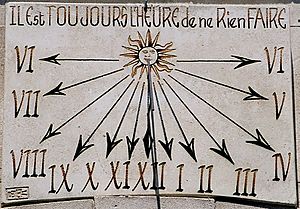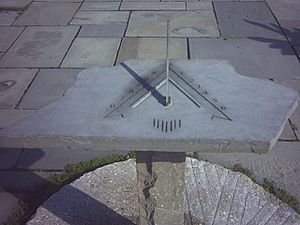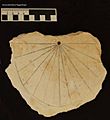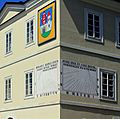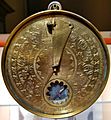Sundial facts for kids
A sundial is a clever tool that tells you the time of day using the sun! It works because the sun appears to move across the sky. As it moves, it creates a shadow in different places. By looking at where this shadow falls on the sundial's special surface, you can find out the current solar time.
There are many types of sundials. Some are common garden decorations. Others are very fancy designs. But the main idea is always the same: a fixed object makes a shadow on a marked surface.
Contents
The History of Sundials: How People Told Time Long Ago
Sundials are super old! People in Ancient Egypt used them thousands of years ago. Later, other amazing cultures like the Greeks and Romans also used and made better sundials. They were some of the first ways humans could accurately tell time during the day.
How a Sundial Works: Shadow Play and Time Telling
So, how does a sundial actually tell time? It uses two main parts: a special pointer called the gnomon and a marked surface called the dial plate.
The Gnomon: The Shadow Maker
The gnomon is the part of the sundial that sticks up. It's the part that casts the shadow. Think of it like the sundial's hand. For a sundial to be correct, the gnomon needs to point in a specific direction. In the Northern Hemisphere, it points North. In the Southern Hemisphere, it points South. It also needs to be tilted at an angle. This angle matches the latitude (how far north or south you are) of the sundial's location. This tilt helps the shadow move correctly all day long.
The Dial Plate: Where Time is Marked
The dial plate is the flat or curved surface. This is where the shadow from the gnomon falls. The plate has lines and numbers drawn on it. These marks show the hours of the day. As the sun moves, the gnomon's shadow moves across these lines. This movement shows you the time.
Solar Time vs. Clock Time
It's good to know that a sundial shows solar time. This time is directly based on the sun's position. Solar time can be a little different from the time on your phone or watch. Your phone shows mean time or standard time. Sometimes, you might need to make a small change to the sundial's reading. This helps it match your clock, especially if you want very exact time.
Different Types of Sundials: Creative Designs
Sundials come in many shapes and sizes. Each one is made to work in a special way or place.
- Horizontal Sundials: These are the most common garden sundials. Their dial plate lies flat on the ground.
- Vertical Sundials: You often see these on the sides of buildings. Their dial plate stands upright.
- Equatorial Sundials: These have a dial plate that is tilted. It is parallel with the Earth's equator. They often have two faces, one for summer and one for winter.
- Polar Sundials: These have a gnomon that points directly to the celestial pole (like the North Star). Their hour lines are parallel to each other.
Amazing Sundial Examples Around the World
Sundials are not just old tools. They are also beautiful works of art and science. Here are some cool examples:
-
A sundial in the Singapore Botanic Gardens. Its design shows that Singapore is very close to the equator.
-
A sundial in Perth, Australia. Notice how the hour marks run counter-clockwise because it's in the Southern Hemisphere!
-
The Whitehurst & Son sundial, made in 1812, now at the Derby Museum.
-
A horizontal sundial in Minnesota, showing the time on June 17, 2007.
-
Two sundials at the Fatih Mosque in Istanbul, from the late 16th century.
-
A unique diptych sundial shaped like a lute, from around 1612.
Related pages
See also
 In Spanish: Reloj de sol para niños
In Spanish: Reloj de sol para niños


